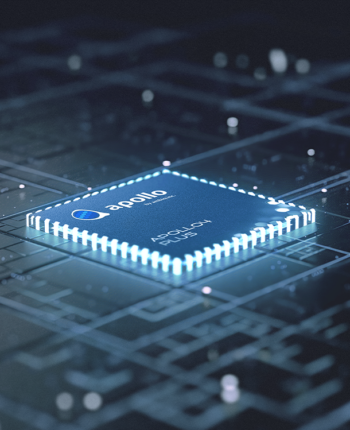Practical ultra-low power endpointai Fundamentals Explained
Practical ultra-low power endpointai Fundamentals Explained
Blog Article

DCGAN is initialized with random weights, so a random code plugged in to the network would produce a totally random impression. Having said that, when you might imagine, the network has a lot of parameters that we are able to tweak, and the aim is to locate a setting of those parameters which makes samples created from random codes seem like the teaching information.
Allow’s make this extra concrete using an example. Suppose We've some substantial collection of visuals, like the one.2 million illustrations or photos inside the ImageNet dataset (but keep in mind that This might eventually be a considerable collection of photographs or films from the world wide web or robots).
You could see it as a way to make calculations like no matter whether a little house should be priced at 10 thousand bucks, or what type of temperature is awAIting within the forthcoming weekend.
You’ll locate libraries for talking to sensors, taking care of SoC peripherals, and controlling power and memory configurations, coupled with tools for simply debugging your model from your laptop or Laptop, and examples that tie it all alongside one another.
Apollo510, based upon Arm Cortex-M55, provides 30x improved power efficiency and 10x more quickly efficiency when compared with earlier generations
In the two conditions the samples from your generator get started out noisy and chaotic, and as time passes converge to acquire a lot more plausible image data:
extra Prompt: A litter of golden retriever puppies playing during the snow. Their heads come out of your snow, included in.
That’s why we think that Finding out from true-earth use is often a significant ingredient of making and releasing ever more Safe and sound AI devices after some time.
additional Prompt: Photorealistic closeup online video of two pirate ships battling one another since they sail inside of a cup of espresso.
Prompt: A flock of paper airplanes flutters through a dense jungle, weaving about trees as when they ended up migrating birds.
The final result is the fact that TFLM is tough to deterministically enhance for Power use, and people optimizations are typically brittle (seemingly inconsequential change lead to large Vitality performance impacts).
A regular GAN achieves the objective of reproducing the information distribution while in the model, though the structure and organization from the code Room is underspecified
Suppose that we employed a newly-initialized network to produce 200 visuals, every time starting off with a unique random code. The concern is: how need to we modify the network’s parameters to inspire it to provide slightly extra plausible samples Sooner or later? Recognize that we’re not in a simple supervised location and don’t have any specific wanted targets
The DRAW model was released just one year ago, highlighting once again the swift development becoming manufactured in teaching generative models.
Accelerating the Development of Optimized AI Features with Ambiq’s neuralSPOT
Ambiq’s neuralSPOT® is an open-source AI developer-focused SDK designed for our latest Apollo4 Plus system-on-chip (SoC) family. neuralSPOT provides an on-ramp to the rapid development of AI features for our customers’ AI applications and products. Included with neuralSPOT are Ambiq-optimized libraries, tools, and examples to help jumpstart AI-focused applications.
UNDERSTANDING NEURALSPOT VIA THE BASIC TENSORFLOW EXAMPLE
Often, the best way to ramp up on ultra low power mcu a new software library is through a comprehensive example – this is why neuralSPOt includes basic_tf_stub, an illustrative example that leverages many of neuralSPOT’s features.
In this article, we walk through the example block-by-block, using it as a guide to building AI features using neuralSPOT.
Ambiq's Vice President of Artificial Intelligence, Carlos Morales, went on CNBC Street Signs Asia to discuss the power consumption of AI and trends in endpoint devices.
Since 2010, Ambiq has been a leader in ultra-low power semiconductors that enable endpoint devices with more data-driven and AI-capable features while dropping the energy requirements up to 10X lower. They do this with the patented Subthreshold Power Optimized Technology (SPOT ®) platform.
Computer inferencing is complex, and for endpoint AI to become practical, these devices have to drop from megawatts of power to microwatts. This is QFN chips where Ambiq has the power to change industries such as healthcare, agriculture, and Industrial IoT.
Ambiq Designs Low-Power for Next Gen Endpoint Devices
Ambiq’s VP of Architecture and Product Planning, Dan Cermak, joins the ipXchange team at CES to discuss how manufacturers can improve their products with ultra-low power. As technology becomes more sophisticated, energy consumption continues to grow. Here Dan outlines how Ambiq stays ahead of the curve by planning for energy requirements 5 years in advance.
Ambiq’s VP of Architecture and Product Planning at Embedded World 2024
Ambiq specializes in ultra-low-power SoC's designed to make intelligent battery-powered endpoint solutions a reality. These days, just about every endpoint device incorporates AI features, including anomaly detection, speech-driven user interfaces, audio event detection and classification, and health monitoring.
Ambiq's ultra low power, high-performance platforms are ideal for implementing this class of AI features, and we at Ambiq are dedicated to making implementation as easy as possible by offering open-source developer-centric toolkits, software libraries, and reference models to accelerate AI feature development.
NEURALSPOT - BECAUSE AI IS HARD ENOUGH
neuralSPOT is an AI developer-focused SDK in the true sense of the word: it includes everything you need to get your AI model onto Ambiq’s platform. You’ll find libraries for talking to sensors, managing SoC peripherals, and controlling power and memory configurations, along with tools for easily debugging your model from your laptop or PC, and examples that tie it all together.
Facebook | Linkedin | Twitter | YouTube